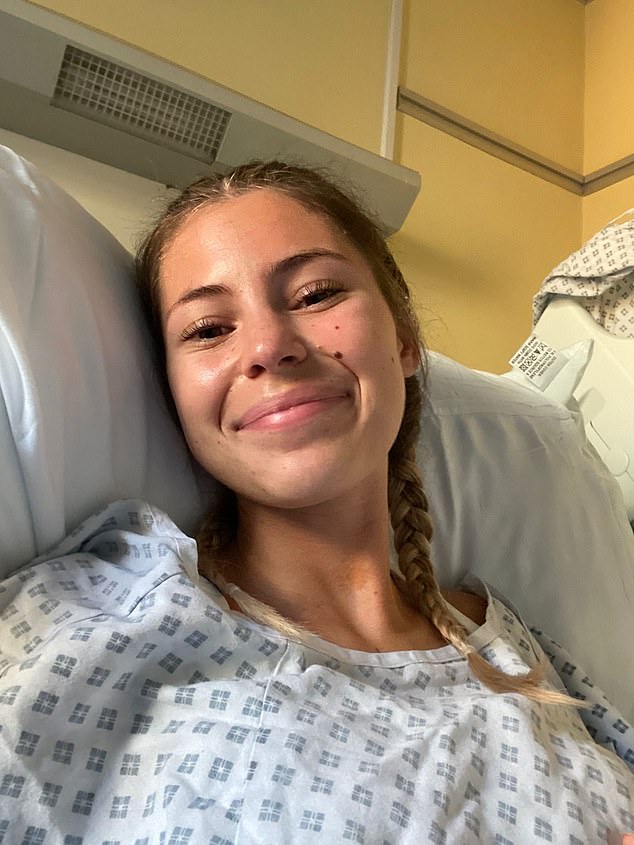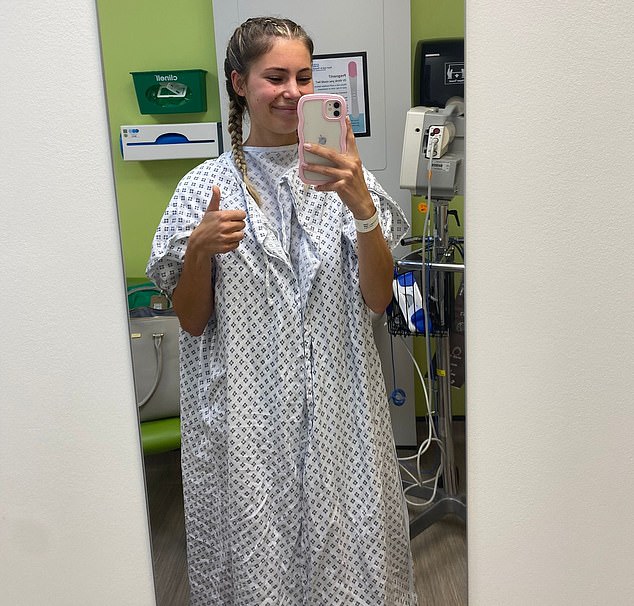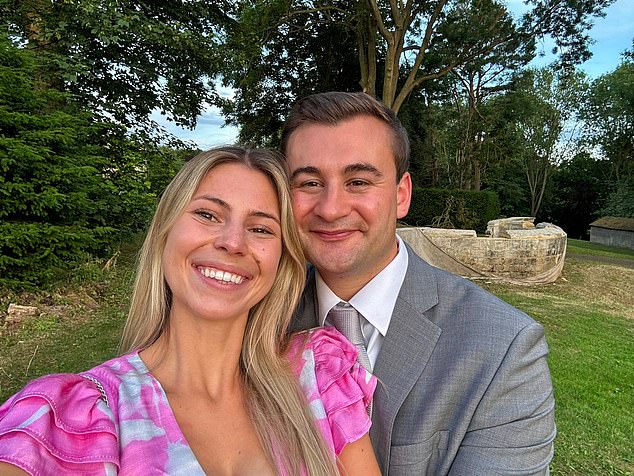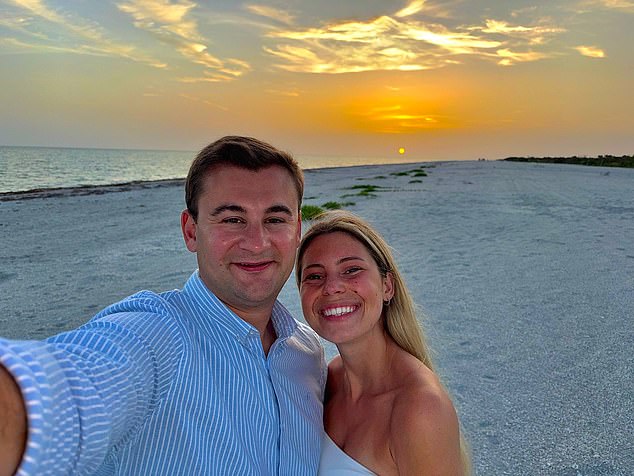It is a difficult decision that, until now at least, relatively few women have been forced to make: having their healthy breasts removed to prevent breast cancer.
Their options are stark – face the prospect of a disease that has likely affected and even killed women in their families, or undergo a surgery described by doctors as ‘medieval’ and ‘mutilating’.
Known as a risk-reducing mastectomy, the procedure is typically offered to women who are at extremely high risk of developing breast cancer, often due to genetic factors.
Women with mutations in genes such as BRCA1 or BRCA2 – which are passed down through families – have significantly higher chances of developing cancer, with some reaching a lifetime risk of up to 80 per cent.
Famously, Hollywood star Angelina Jolie (see below) chose to undergo the surgery after discovering she carried the BRCA1 mutation, which brought the risk-reducing mastectomy into public consciousness.
Tested after losing her mother, Marcheline Bertrand, to ovarian cancer at 56, Jolie’s decision triggered a sharp rise in the number of women seeking genetic testing and opting for mastectomies.
This surge in awareness – that a mastectomy wasn’t just for women already diagnosed with breast cancer but could also be preventative – became known as the ‘Jolie effect’.

Angelina Jolie had genetic testing to see if she carried the BRCA1 mutation after losing her mother, Marcheline Bertrand, to ovarian cancer at 56. When it was found that she did, she opted to have a risk-reducing mastectomy
Still, fewer than 2,000 women a year in the UK choose the surgery. Even women with a high risk often opt to watch and wait rather than having their breasts removed.
However, some experts are now calling for the NHS to explore expanding access to the procedure, suggesting it should be offered to as many as 20,000 women annually.
The aim is to reduce the number of new breast cancer cases, giving more women the opportunity to take preventative action before the disease can take hold.
In a study published last month, researchers proposed lowering the threshold for accessing a mastectomy, meaning women over the age of 30 who are believed to have a 35 per cent – roughly one in three – lifetime risk of developing breast cancer would be offered the operation.
This move, they argue, could prevent as many as 6,500 new cases each year.
But the study has come under fire from other experts who argue that the NHS should move away from mastectomies – a procedure that scars women for life and can trigger a range of complications, including life-threatening infections and chronic pain.
Some also suggest that carrying out more of them would not meaningfully reduce breast cancer deaths.
Now the doctor behind the study has hit back, arguing that women have the right to know whether they are at risk and, if necessary, be able to do something about it.
‘We are constantly learning more about the genetic mutations that put people at an increased risk of breast cancer,’ says Professor Ranjit Manchanda, a gynaecological oncologist at Queen Mary, University of London. ‘But there’s no point in predicting a patient’s risk of cancer if there’s nothing you can do to prevent it.
‘Not everyone will want to have a mastectomy, it’s a personal choice, but women with an increased risk of cancer should have treatment options. The alternative is doing nothing.’
So who would be offered the procedure under these proposed changes – and is it really worth it?

Twenty-seven-year-old Grace Burton decided to have a risk-reducing mastectomy after both her mother and aunt were diagnosed with the cancer
First, it is important to understand exactly what a mastectomy involves.
During the procedure, the breast tissue – where tumours can form – is cut away. Done under general anaesthetic, it usually takes around two hours.
In recent decades the procedure has become more precise. Many women in the UK are now offered a mastectomy, where the surrounding skin and nipple are preserved. In around a third of cases, women also choose to have breast reconstruction, where implants and other techniques are used to recreate the shape of the breasts.
This is offered free on the NHS – including to the 15,000 or so women with breast cancer who have the operation.
In the general population, women have a 12 to 13 per cent lifetime risk of breast cancer – a one in eight chance.
Risk-reducing surgery is offered to women with the BRCA1 and BRCA2 mutations, as well as the PALB2 mutation, which increases risk by up to 58 per cent.
Patients who don’t choose surgery are offered yearly scans to check for early signs of the disease, combined with preventative medicines – such as anastrozole and tamoxifen – that slash the risk by 50 per cent.
Experts say that, while a risk-reducing mastectomy is far more effective at slashing the risk of breast cancer – the procedure lowers the chances of the disease occurring by as much as 95 per cent – it is often a tough decision for patients.
Studies suggest roughly only half of at-risk women take up the offer of the op.
‘It’s a really complex, personal choice that comes with lots of trade-offs,’ says Fiona MacNeill, a senior breast surgeon at the Royal Marsden NHS Foundation Trust. ‘Yes, you are significantly reducing your risk of breast cancer, but you’re also losing your breasts.
‘Patients often feel like they lost their femininity after the procedure. It affects a woman’s sexual confidence. You also lose the ability to breastfeed, which for young women planning to become mothers can be a big deal.

The corporate finance consultant from Bromley, south-east London, found out that she carried the BRCA1 mutation when she was 21
‘And, after all that, it’s possible you may never have developed cancer if you hadn’t had the op.’
In recent years, research has uncovered a number of other genes that increase breast cancer risk. These include two relatively common mutations, CHEK2 – carried by around one in every 200 women – and ATM – that occurs in around one in every 100.
Less common are RAD51C and RAD51D, which are each believed to be carried by around 8,000 women in the UK.
Experts say most women who carry these genetic mutations are unaware of their risk.
This is because – like those who find out they carry the better-known mutations – they would only find out if they were offered a genetic test after the diagnosis of a close relative.
This means it is hard for researchers to establish how many women in the UK have this raised risk of breast cancer. Some estimates put the number at close to 400,000.
These lesser-known mutations alone do not mean someone has a dramatically increased chance of breast cancer. However, alongside other factors, such as obesity, alcohol intake and increasing age, the risk can begin to mount.
According to the charity Breast Cancer Now, patients concerned they carry one of these mutations – due to a family history – should speak to a GP who may be able to refer them for genetic testing. Crucially, however, they are not offered a risk-reducing mastectomy.
Prof Manchanda says this is the wrong approach. ‘No one has ever looked into whether this group of women would benefit from preventative surgery,’ he explains.
‘The NHS accepts that anyone with the BRCA1, BRCA2, or PALB2 mutations should be offered the procedure, but there’s been no scientific studies looking at whether patients with other mutations would benefit too. We wanted to change that.’
In his study, published in the journal JAMA Oncology, Prof Manchanda and colleagues at the London School of Hygiene and Tropical Medicine concluded that, of the 58,000 breast cancer cases diagnosed every year, around 6,500 could be prevented by lowering the risk threshold for offering a mastectomy to 35 per cent.
Moreover, doing so would be cheaper for the NHS than treating those patients for breast cancer.
‘We think this is something that merits further research,’ says Prof Manchanda. ‘The next step is to see whether women with this raised risk would want to have the procedure.’
Similar changes have been made to the NHS guidelines that dictate which patients can undergo surgery to have their ovaries and fallopian tubes removed in order to prevent ovarian cancer.

Grace had the surgery last year, after marrying her partner, Tom Cheesman, also 27
Last year, the NHS spending watchdog, the National Institute for Health and Care Excellence (NICE), concluded that women with a 5 per cent lifetime risk of ovarian cancer should be offered the radical procedure. Previously, only those with a 10 per cent risk were given this option.
The move was made after researchers found there is a wider range of ovarian cancer-causing gene mutations than once thought. ‘It’s possible that, eventually, similar changes will be adopted for the prevention of breast cancer,’ says Prof Manchanda.
But fewer than half of women diagnosed with ovarian cancer survive more than five years, while eight in ten women with breast cancer are cured. Experts say this means that, while preventative ovarian surgery can be life-saving, a risk-reducing mastectomy is unlikely to be – as it’s more than likely that the patient would survive the cancer if it did arise.
Prof Manchanda says: ‘We don’t think the measure we propose would considerably lower the number of breast cancer deaths – though it would prevent some. The main thing is that many women would prefer to avoid getting cancer altogether and not have to go through treatment.’
However, Ms MacNeill says: ‘A mastectomy is a fairly straightforward procedure, but a reconstruction is not. Many patients are left with chronic pain in the area around the implant, others may really dislike the way it looks. Some patients end up needing multiple surgeries to correct these issues.’
Ms MacNeill argues that the NHS should be looking for ways to move away from mastectomies, rather than increasing the number that are offered.
‘This is a crude prevention tool,’ she says. ‘The irony is that we know so much about the genes linked to breast cancer because of modern advances in testing. And yet, here we are using a medieval treatment to prevent it.
‘I believe too many women are getting mastectomies as it is, and this would only increase that number.
‘If you have a 35 per cent chance of developing breast cancer, it’s more likely that you won’t get cancer. But patients always overestimate their risk out of fear.
‘It’s very common that women will come to me and ask for a mastectomy. But once I’ve properly explained the risks compared to the benefits, many chose to go with screening instead.
‘The problem is that some surgeons don’t have the time to sit down and have this conversation, so they immediately agree to do the procedure.
‘And this would only happen more often if we offered mastectomies to more women.’
However, other experts point out that research suggests that most patients who undergo a mastectomy are satisfied with their decision – even if they do experience complications.
One of those is 27-year-old Grace Burton, who decided to have a risk-reducing mastectomy after both her mother and aunt were diagnosed with the cancer.
The corporate finance consultant from Bromley, south-east London, found out that she carried the BRCA1 mutation aged 21, but decided to wait to undergo the operation.
‘I was told that, at that age, it was unlikely I’d develop cancer, so I just had yearly scans,’ says Grace. ‘But I knew that I very much wanted to have it done. I didn’t want to sit around waiting for the cancer to arrive.’

In May, Grace and Tom went on holiday to Florida – her first trip since the surgery. ‘When I got there I realised for the first time that none of my bikinis fit me any more, and I did feel a bit self-conscious that my scars were showing under some of my tops,’ she says
In October 2024, after marrying her partner, Tom Cheesman, 27, Grace had a risk-reducing mastectomy and breast reconstruction, which took several months of recovery.
This involved wearing surgical drains – designed to help prevent fluid build-up under the skin – for several weeks.
Grace was also briefly hospitalised after she suffered a reaction to the implants.
She says it has taken some time to get accustomed to the implants. In May, she went on holiday to Florida – her first trip since the surgery.
‘When I got there I realised for the first time that none of my bikinis fit me any more, and I did feel a bit self-conscious that my scars were showing under some of my tops,’ she says.
‘It’s also, at times, physically uncomfortable too. I can feel the plastic edges of the implants, particularly when I lift my arms up.
‘Sleeping can be also difficult. When I roll on to my front, I can feel them pressing into my chest.’
Despite this, Grace says that she doesn’t regret the procedure.
‘Yes, there’s no guarantee that I would’ve got cancer, but, for me, the risk was just too high,’ she says.
‘At one point, before the procedure, a nurse asked me whether I wanted to wait a few more years until I had kids so I could breastfeed, but I said I’d be a better mother alive than dead.’
ANGELINA’S REVELATION THAT HAS SAVED LIVES WORLDWIDE

Last year, actress Kara Tointon revealed she’d had a mastectomy after finding out that she carried a BRCA mutation. Her mother, Carol, had died of ovarian cancer in 2019, aged 62
She’s one of the world’s most recognisable actresses, and renowned for her humanitarian work in developing countries.
But it’s possible that Angelina Jolie’s longest-lasting legacy will be an article she wrote for The New York Times in 2013.
Ms Jolie, then 38, revealed she’d had a double mastectomy. Genetic testing had shown she carried the BRCA1 mutation, and doctors estimated she had an 87 per cent risk of breast cancer and 50 per cent risk of ovarian cancer.
The article had an instant impact worldwide, with many women learning about cancer-causing genetic mutations for the first time.
In the year following Ms Jolie’s revelation, the number of women who were referred for BRCA testing in the UK doubled, in what has became known as the ‘Jolie effect’. Clinics also reported a rise in risk-reducing mastectomies in following years.
Last year, the former EastEnders actress and Strictly Come Dancing winner Kara Tointon, 41, revealed she’d had a mastectomy after finding out that she carried a BRCA mutation. Her mother, Carol, had died of ovarian cancer in 2019, aged 62.











